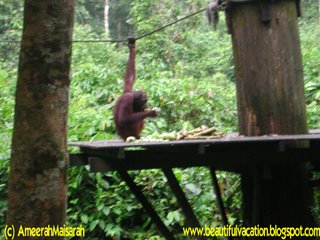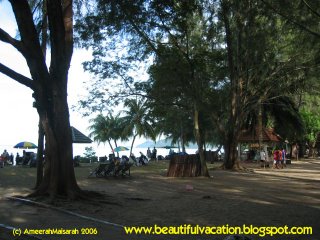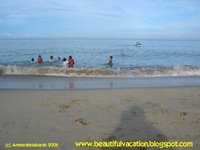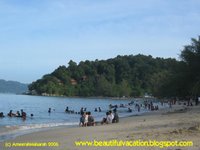Had you ever touched “Orang Utan” ,if you wish to do so, come and visit the Sepilok Orang Utan Rehabilitation Centre situated only 20 minutes by road from Sandakan (25 km.This world-famous Sanctuary enables visitors to come in close contact with the remarkable "Orang Utan" which means "man of the forest" in Malaysian. Orang-utans have brown and rust-coloured shaggy fur. They weigh an average of 50 kg (110 lb) and can weigh over 90 kg (200 lb). The orang-utan lives in tropical, swamp and mountain forests, where it eats mostly fruit, leaves and insects. The red-haired Orang Utans are amust-see, when you bring a visit to Sabah. Here, in the Sepilok Orang Utan Rehabilitation Centre, young orphaned or captive orang utans are taught survival skills so that they may return to their natural habitat. After that, they are released into the forest.
Visiting Sepilok Orang Utan Sanctuary was one of the best highlights of my gap year around Malaysia. The Rehabilitation Centre is set in 43 square kilometers of beautiful virgin rainforest . The centre does an excellent job of rehabilitating orphaned Orang Utan's and returning them to the wild. Without places like Sepilok these amazing animals would be lost from our planet forever.

A wooden walkway takes you through some of Sabah's most beautiful rainforests to the feeding station in the heart of the sanctuary. We were advised not to expect to see many, if not any, Orang Utans coming back to feed. Twice a day food is put out for the Orang Utans to suppliment their wild diets.
We were thrilled when the trees started to rustle and three fully grown females swung in. They were closely followed by five more, including some smaller, 'teenage' Orang Utans.


One particular male stopped to give us a cheeky show of tricks before heading for the platform to feed. They are fasinating creatures to observe. We were so lucky to see ten in total that afternoon. But theres only two of it that i can had a picture of it, because of my camera problem.
These large red apes - man's closest relative- are astonishingly gentle and highly intelligent, gazing at visitors with almost disconcerting frankness.
To avoid the spread of disease, touching the animals is not permitted inside the Rehabilitation Centre. However, it is usually possible to meet and photograph a couple of the mature females, who are so fond of human company that they refuse to go back to the wild, just outside the Registration Centre.
The Sanctuary also houses a couple of highly endangered Sumatran rhinos, and occasionally other animals such as elephants. There is an Information Nature Education Centre, and a mini-theater where a documentary video about the work of the Sepilok Orang Utan Sanctuary is shown. Visitors are advised to arrive about one hour in advance to register and enjoy activities prior to the feeding. It is possible to take a taxi to Sepilok Rehabilitation Centre and have it wait for your return. There are also infrequent buses marked "Sepilok" leaving from the station near the Central Market. All tour operators offer guided tours which include transport.
There's also a Mangrove Forest Trail. This trail in the Sepilok Centre and takes about 2-3 hours walking one way. Interesting features include a scenic stream, water-holes, transitional forest, pristine lowland rain forest, boardwalks into the mangrove forest and wildlife tracks.
 Any trip to Sabah would not be complete without a visit here.
Any trip to Sabah would not be complete without a visit here.


















